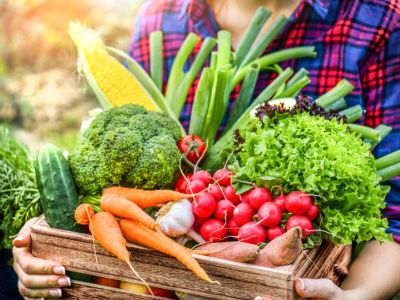The Self-Sustaining Food Garden
Simply put, a self-reliant garden provides all or a significant portion of your family’s produce needs. Not only does growing a self-sufficient garden reduce dependency upon the commercial food chain, but knowing we can provide for ourselves and our families in a time of crisis is downright satisfying. Whether you’re new to gardening or you’ve been at it for years, following these tips will help when planning a self-sufficient garden.
Choose a sunny location – most vegetable plants require 6 or more hours of direct sunlight per day. Start slow – When first starting a self-sustaining food garden, focus on a handful of your favorite crops. Growing all the lettuce or potatoes your family needs for a year is an excellent first-year goal. Optimize the growing season – Plant both cool and warm season veggies to stretch out the harvest period. Growing peas, tomatoes and Swiss chard can give your self-reliant garden three seasons of fresh food. Go organic – Compost leaves, grass and kitchen scraps to reduce your reliance on chemical fertilizer. Collect rainwater to use for irrigation. Preserve food – Increase gardening self-sufficiency by storing that peak of harvest abundance of produce for the off-season. Freeze, can or dehydrate excess garden vegetables and grow easy-to-store produce like onions, potatoes and winter squash. Successive sowing – Don’t plant all your kale, radishes or corn at the same time. Instead, extend the harvest period by sowing a small amount of these veggies every two weeks. This allows these feast or famine crops to reach maturity over several weeks or months. Plant heirloom varieties – Unlike modern hybrids, heirloom seeds grow true to type. Sowing vegetable seeds you collected is another step towards gardening self-sufficiency. Go homemade – Repurposing plastic containers and crafting your own insecticidal soaps saves money and reduces your reliance on commercial products. Keep records – Track your progress and use these records to improve your gardening success in future years. Be patient – Whether you’re building raised garden beds or amending the native soil, reaching total gardening self-sufficiency takes time.
Planning a Self-Sufficient Garden
Not sure what to grow in your self-sustaining food garden? Try these heirloom vegetable varieties:
Asparagus – ‘Mary Washington’ Beets – ‘Detroit Dark Red’ Bell Pepper – ‘California Wonder’ Cabbage – ‘Copenhagen Market’ Carrots – ‘Nantes Half Long’ Cherry tomatoes – ‘Black Cherry’ Corn – ‘Golden Bantam’ Green beans – ‘Blue Lake’ pole bean Kale – ‘Lacinato’ Lettuce – ‘Buttercrunch’ Onion – ‘Red Wethersfield’ Parsnips – ‘Hollow Crown’ Paste tomato – ‘Amish Paste’ Peas – ‘Green Arrow’ Potatoes – ‘Vermont Champion’ Pumpkin – ‘Connecticut Field’ Radish – ‘Cherry Belle’ Shelling beans – ‘Jacob’s Cattle’ Swiss chard – ‘Fordhook Giant’ Winter squash – ‘Waltham butternut’ Zucchini – ‘Black Beauty’
